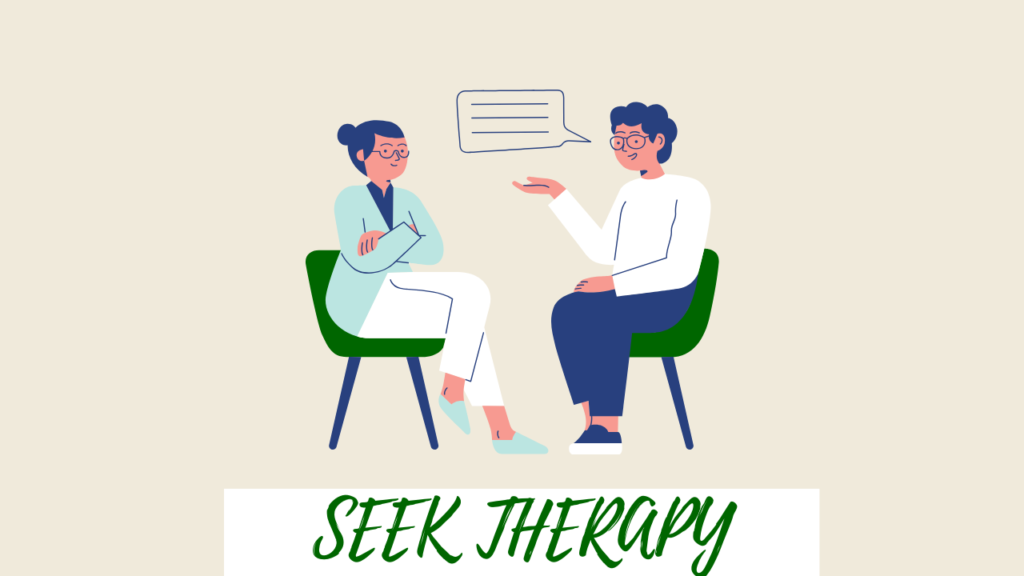Therapy in Fashion: 6 Powerful Reasons to Start Today
Seeking Therapy: A Path to Mental Wellbeing in the Fashion Industry Fashion is often seen as a glamorous world filled with beauty, creativity, and success. From dazzling runway shows to iconic magazine covers, the fashion industry is a dream for many aspiring individuals. However, behind the glitz and glam, the reality of working in fashion can often be overwhelming. The pressure to stay relevant, the desire to meet high expectations, and the constant race for perfection can take a significant toll on one’s mental and emotional well-being. In a world where appearances are everything, there is an increasing need to discuss the importance of seeking therapy, mental health awareness, and self-care within the fashion industry. In this article, we will explore why mental health should be prioritized in fashion, how seeking therapy can be a tool for personal growth and well-being, and why breaking the stigma around therapy is crucial for fostering a healthier industry. Mental Health in Fashion: The Hidden Struggles The fashion industry, like many other creative industries, is notorious for its fast-paced, highly competitive, and often volatile nature. Whether you’re a designer, model, stylist, photographer, or journalist, the pressure to constantly innovate, perform, and maintain a flawless image can be mentally and emotionally taxing. The Pressure to Be Perfect Fashion is built on the idea of perfection — perfect bodies, perfect designs, perfect photoshoots, and perfect campaigns. This drive for perfectionism can create immense pressure, particularly for those working on the front lines of fashion, such as models and influencers. The constant comparison to unattainable beauty standards and the need to maintain a curated, “perfect” online persona can take a toll on mental health. The Impact of Social Media With social media platforms such as Instagram, TikTok, and Twitter becoming essential tools for promoting fashion, professionals are not just working in a public eye but are constantly exposed to criticism, unrealistic beauty standards, and the pressure of social validation. Models and designers are often subject to public scrutiny and may find it difficult to separate their self-worth from the approval they receive online. Social media has created a “highlight reel” culture, where only the best moments are shared, leaving little room for vulnerability or struggles. This can lead to feelings of isolation, self-doubt, and anxiety. The pressure to present an idealized version of life on social media is particularly difficult in an industry where public image is crucial. Body Image Issues Body image is one of the most prominent issues within the fashion industry, especially for models who face criticism or judgment based on their appearance. This often leads to self-esteem issues and eating disorders. A study published in The International Journal of Eating Disorders found that models experience a high level of body dissatisfaction due to the constant pressure to maintain a specific body type. With the rise of the “size zero” trend in fashion, many models have reported experiencing disordered eating habits in order to fit the narrow standards set by the industry. Although the industry has made strides in recent years by becoming more inclusive of diverse body types and ethnicities, body image struggles remain a pervasive issue for many individuals working in fashion. These challenges highlight the need for better mental health support and therapy for those affected by these pressures. Work-Life Balance Struggles In an industry where long hours, tight deadlines, and constant travel are the norms, maintaining a healthy work-life balance can be incredibly challenging. Designers, models, and other fashion professionals are often expected to dedicate their lives to their careers, sacrificing personal time and relationships for the sake of their jobs. This relentless work schedule can lead to burnout, anxiety, and depression. For fashion professionals who travel frequently for shows, photoshoots, or business meetings, being away from home and loved ones can contribute to feelings of loneliness and isolation. This constant cycle of work and travel can make it difficult for individuals to establish a sense of stability, which is crucial for maintaining mental well-being. Breaking the Stigma: Why Therapy Matters Despite the growing awareness around mental health, many individuals in the fashion industry continue to shy away from seeking therapy. The stigma surrounding therapy remains, particularly in an industry where outward appearances and maintaining a strong persona are prioritized. However, therapy can be an invaluable tool for mental health and personal growth, helping individuals navigate the challenges and stressors that come with working in fashion. The Power of Therapy for Self-Discovery Seeking therapy offers an opportunity for self-reflection and growth. Fashion professionals often face intense external pressure to succeed, and therapy provides a safe space where individuals can explore their feelings, fears, and aspirations without judgment. Through therapy, individuals can gain greater self-awareness and better understand the root causes of their stress, anxiety, or insecurities. Therapy encourages self-compassion, helping individuals acknowledge and accept their flaws and vulnerabilities. In a world that often focuses on external success, therapy offers a refreshing space to focus on internal growth and mental well-being. Managing Stress and Anxiety The fast-paced nature of the fashion industry can easily lead to feelings of overwhelm, stress, and anxiety. Whether it’s preparing for a major runway show or dealing with the pressure of meeting deadlines, these stressors can take a significant toll on one’s mental health. Therapy provides individuals with coping strategies to manage these feelings in healthy ways. Techniques such as cognitive-behavioral therapy (CBT), mindfulness, and relaxation exercises can help individuals navigate stressful situations more effectively. By learning to reframe negative thoughts and adopt healthier coping mechanisms, individuals can better handle the challenges of the fashion world. Building Emotional Resilience One of the greatest benefits of therapy is that it helps individuals build emotional resilience. In the fashion industry, rejection is a common experience — models are not booked for shows, designers face criticism, and campaigns may not go as planned.




